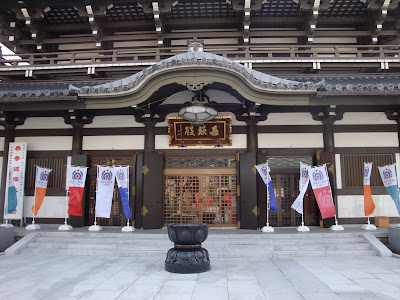
A history of meditation (my own!)
I am not a meditation teacher in any sense of the word, but I want to go on the 'satisfied users' list. My comments will be mostly experiential.
Looking back, one of my earliest memories was trying to sort out my own consciousness. At age three or four, I once wondered something like 'what is this ''me''?' I wondered if I was really something separate from the world, separate from family and other people around me. Of course, memories from so long ago can be suspect, so grains of salt are necessary.
Sometime in my 'tween' years, I remember reading about self-hypnosis in some magazine, maybe Popular Science or something like that. Looking back, I realize now that the techniques in that article were related to meditation. But at the time, I just did a few sessions of closing my eyes (at least once I did it lying down), but nothing fantastic happened.
I remember the first time I heard the word 'meditation.' My parents were big fans, and also friends, of the minister at our church. His seat in the chancel gave the congregation a view of his profile. My mother noticed that he spent a lot of time with his eyes closed and head bowed. Her comment was 'I wonder if he is meditating or just sleeping?' Hmm...that posture is associated with prayer, but she said 'meditating...' Well, I didn't give it that much thought. However, after reading Faith of a Heretic by Walter Kauffmann, I gave up on Christianity, without too much concern about what might replace it.
In college, I took a trip to Europe, and at the port of Capri I met an English woman who had been on a sailing adventure in the Mediterranean. She told us that she was a meditation teacher. I didn't have a clear idea of what that was, but I was very curious. I hoped she would teach me! Now, I suspect she was a teacher of Transcendental Meditation, and probably would require a big fee to teach me. But anyway, I was intrigued. Lots of people at my university were talking about Zen and stuff. I bought a book by Christmas Humphries, Teach Yourself Zen. It had a lot of interesting stuff, but for some reason, I don't remember any discussion of meditation. Or maybe I didn't know that zazen was meditation? The one thing I remembered from the book was the adage 'When the student is ready, the master will appear.'
I was definitely a (college) student, but I was uncertain about the notion of having a master. In my third year in college, someone from a big Nichirenist organization invited me to a discussion meeting. I remembered the adage, and wondered if maybe this was my master appearing. I became pretty enthusiastic about it for a while, but I never made any connection between the chanting of Nam Myoho Renge Kyo and meditation. Now I believe they are closely related practices. But after a while, I had a lot of trouble keeping up the practice, and there were also 'political' problems going on in the organization, so I thought I might find some answers if I went to Japan.
In Japan, I did NOT find any answers related to chanting (although the basic problem was with myself, of course), and continued to drift away from it. At the same time, I began to come up against feelings of depression, middle-age crisis and so on. Among my books, I rediscovered my copy of Mind Control by José Silva. I had read through it earlier, with some interest, but no action. Well, maybe this was the time to take action. So I followed the most basic exercises, I believe it was just a few minutes a day for three ten-day periods. These allow you to become accustomed to the physical techniques for this method of meditation. For the first time, I could really feel that something was happening. I thought it was quite a discovery, although I was less interested in the more advanced techniques of the Silva Method, which are purported to develop psychic abilities and the like. But I started looking around the internets for more info on meditation, since I was now certain that this was a path worth pursuing.
Stumbling around the 'net, I came across the fabled E-Sangha, now lost in the sands of time. In its heyday, it was truly amazing. Beginners and advanced lamas/ajans/roshis intermingled in open discussions, with questions, comparisons, even some 'teachings.' It must have been the first time that practitioners of all major traditions had a chance to interact in various fora. In the Nichiren forum, I discovered that some people were continuing to chant NMRK and intone sutras without being part of an organization. Hey, I could do that! I still had my altar, candles and incense, so I started chanting again. In another forum, someone posted about an esoteric ceremony at Koyasan, a major institution of Shingon Buddhism. The ceremony was open to anyone, so I went. It was a real eye-opener. The atmosphere at Koyasan is amazing. It is an isolated town dedicated to Buddhism--no chain stores, no Starbucks, no karaoke, no neon, no pachinko. Maybe three out of four shops on the average street are related to Buddhism--shops selling rosaries and incense, makers of altars and fittings, sellers of greenery and fruit for offerings, and temples everywhere--more than 200 I believe.
Once E-Sangha had fulfilled its mission of introducing me to Shingon, the site foundered and fell off the web. (to be continued) (The photo above is the altar of Rengejoin ((dedicated to Amida Buddha)), the temple at Koyasan where I stayed. This temple also has meditation sessions in this hall, in very dark conditions. That seems to be part of it.)




